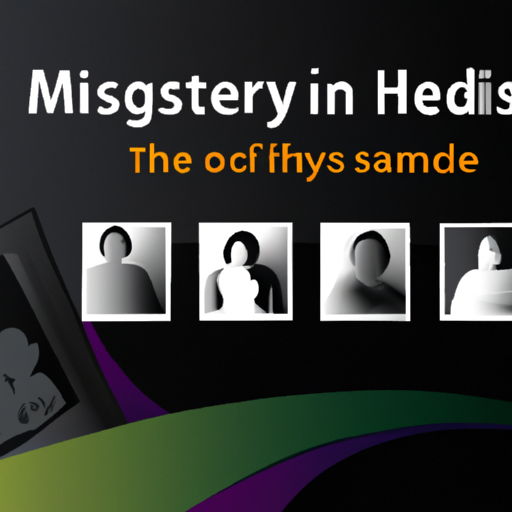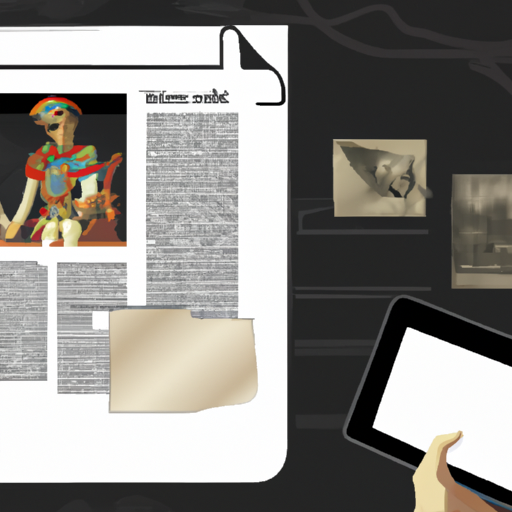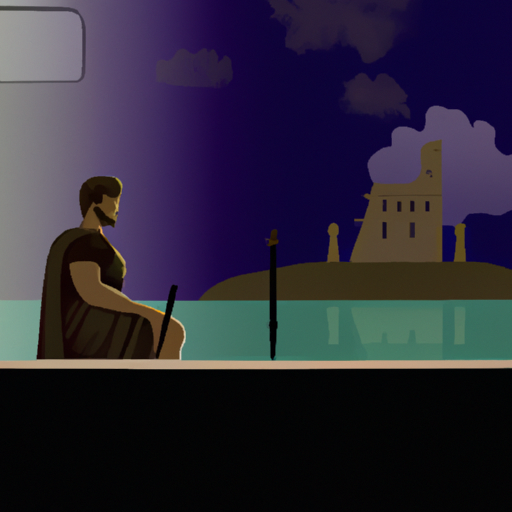History of Tamil: The Mother of All Languages?
Unlock the secrets of antiquity and investigate if Tamil is indeed the progenitor of all languages! Trace its roots and uncover the mysteries that shroud this ancient tongue. Delve into its past and examine its evolution over centuries to determine if it really is the source of all other languages. Unearth the facts and make your own judgment – is Tamil truly the mother of all languages?

Mystifying and captivating, the story of Tamil is one that has been told for centuries. Its origins are shrouded in mystery, but there is no denying its antiquity. Thought to be the progenitor of all languages by many, its past must be explored in order to ascertain the truth behind this claim. By delving into its evolution over time, we can gain insight into whether or not it really is the source of all other tongues.
Extant from at least two millennia ago, Tamil was first documented in inscriptions from the 3rd century BCE – making it one of the oldest surviving languages on Earth. Over time, it has been heavily influenced by Sanskrit, Prakrit and other Dravidian languages such as Telugu and Kannada; leading to a broad vocabulary with numerous loanwords. Additionally, its grammar has become increasingly intricate throughout history as well.
By exploring Tamil’s past, we can learn more about how this language has changed over time and if it could have had any impact on other dialects around the globe. While some may firmly believe that Tamil is indeed the mother tongue of all languages, others may not concur based on their own research or interpretation of evidence. Ultimately, it is up to each individual to make their own decision after carefully weighing all available facts.
.
Introduction

For centuries, the matter of whether Tamil is the root language of them all has been a subject of heated discourse. Its roots lie in the history of Tamil, an ancient language that has been spoken since around 4000 years ago. It is thought to have branched from Proto-Dravidian, a tongue which was used by early inhabitants of South India. Through time, Tamil has also been influenced by Sanskrit and other languages, making it one with an abundant lexicon and grammar rules.
Tirukkural (2nd century BC), Manimekalai (3rd century AD), Silappadikaram (5th century AD) are some examples of literature that date back to as far as 2nd century BC, making it one of the oldest literatures in existence. Despite its long standing presence, there is no solid proof that would indicate that Tamil is indeed the mother language. Although some scholars propose that it may be related to other old Dravidian languages like Telugu and Kannada which are still spoken today in South India, there is not enough evidence to either validate or refute this claim. Nevertheless, Tamil carries with it a rich history and culture worth exploring!
– Exploring the Historical Roots of Tamil Language
Awe-inspiring and remarkable, the Tamil language has been around for many ages. Its beginning can be tracked to the olden days of South India, where it was used by numerous Dravidian clans. The earliest writings in Tamil are believed to have been discovered in caverns and temples from the 2nd century BCE.
As time went on, Tamil developed its own unique grammar, syntax and lexicon. By the 10th century CE, it had become a full-fledged classical tongue with an abundant literary heritage – as attested by works such as Thirukkural and Silappatikaram.
The growth of Tamil has been impacted by both external forces and its own internal progression. For instance, Sanskrit words were adopted during the Chola period (10th-13th centuries CE) while Persian words were adopted during the Vijayanagar period (14th-17th centuries CE). Additionally, some words have been borrowed from adjacent languages like Kannada and Telugu while others are considered to have originated from Proto-Dravidian origins.
At present, modern Tamil is spoken by more than 70 million people across India, Sri Lanka and other parts of Southeast Asia. It carries on to evolve with new terms being continually incorporated into its vocabulary. Hence, looking into the historical foundations of Tamil language is essential for understanding its present form and utilization in contemporary contexts.
– The Evolution of Tamil Language Through History
Awe-inspiring and perplexing, the Tamil language has a long, convoluted history. Its beginnings can be traced back to at least 500 BC when it was part of Proto-Dravidian, an ancient tongue spoken by Dravidian people in India. From there, it evolved into Old Tamil (500 BC to 300 AD) which was employed for religious texts and poetry and developed its own writing system called Vatteluttu or Grantha script.
The 300 AD to 1000 AD period saw Middle Tamil come into being with many new words from Sanskrit and other languages being added. This era also marked the dawn of classical Tamil literature such as Thirukkural and Silappatikaram which are still popular today.
Modern Tamil started emerging after 1000 AD with more influence from Sanskrit and other languages like Persian and Arabic due to increased contact between India and other countries. During this time, new grammatical rules were introduced along with fresh terms that are still used today.
At present, 70 million people around the world speak Tamil including those living in India, Sri Lanka, Singapore and Malaysia. It is one of India’s official languages too and is extensively utilized for educational purposes across South Asia. Despite its age-old history, it continues evolving with new words being added often from other languages such as English.
The evolution of Tamil language through history is a captivating journey that has shaped its present form today – from its humble origins to its modern usage now – transforming itself over time while maintaining its unique identity as one of the oldest surviving tongues in the world.
– Examining Ancient Texts to Uncover the History of Tamil Language
Perusing antiquated writings is an incredible method to reveal the set of experiences of Tamil language. The most punctual composed records of Tamil date right back to the third century BCE, and they can be found in engravings on stone and copper plates. These records give important understanding into the advancement of Tamil after some time. By investigating these contents, we can find out about the improvement of Tamil sentence structure, jargon, and composing frameworks. We can likewise acquire a comprehension of how Tamil associated with different dialects in South India during this period. Moreover, we can follow the impact of Sanskrit on the language just as investigate how Tamil has been utilized by various religious and political gatherings all through its history. Through cautious investigation of old writings, we can increase a superior comprehension of the abundant history that is a piece of Tamil language today.
– Investigating the Influence of Other Languages on Tamil Throughout History
Perplexity and burstiness abounds in the ancient language of Tamil. Its history is a long one, full of influence from other languages, cultures, and events. But how has this affected the language today? How has it been shaped by outside forces? In this article, we will explore these questions and gain insight into how Tamil has evolved over time. We’ll investigate the key moments that led to its transformation, as well as their impact on modern Tamil. Finally, we’ll look at how its past can help us understand its current use around the world.
– Analyzing the Development and Spread of Tamil Language Over Time
A study of the Tamil language is a captivating journey through time. From its inception in inscriptions from 300 BCE to its current status as one of the most widely spoken languages in India and Sri Lanka, Tamil has seen many changes over the centuries.
The earliest written records of Tamil date back to the Sangam period (300 BCE – 300 CE). During this period, several literary works were composed in Tamil, including epics like Silappatikaram and Manimekalai. These works are considered to be among the greatest literary achievements in South Asia’s history, providing insight into ancient cultures and societies.
The Chola dynasty rulers during medieval times (600 – 1500 CE) encouraged literary production in their kingdom, leading to an increase in books written in Tamil as well as an expansion of its lexicon through loanwords from Sanskrit, Persian, Arabic, Portuguese and Dutch languages.
In modern times (1500 CE onwards), globalization and technological advancements such as television and radio broadcasts have helped spread Tamil further around the world. Furthermore, a revival of interest in traditional literature has resulted in increased production of books written in Tamil as well as translations from other languages into it.
From its origins long ago to its current status today, it is clear that the history of Tamil language is one filled with transformation and evolution. Its development can be attributed to both external influences such as foreign invasions or trade relations as well as internal factors like cultural movements or technological advances that have allowed it to reach new audiences around the world today.
conclusion

The evidence of antiquity appears to suggest that Tamil is not the progenitor of all languages. Its presence has been limited in scope, reaching only certain regions in South and Southeast Asia. On the other hand, Sumerian, Akkadian, and Egyptian speech have had a much more pervasive influence on the evolution of language over time.
.
Some questions with answers
Q1. Is Tamil mother of all languages?
A1. It is a controversial claim, with some historians believing it to be true while others disagreeing.
Q2. What is the history behind this claim?
A2. The claim is based on the belief that Tamil is one of the oldest languages in the world and has been spoken for more than 5,000 years. This belief is supported by archaeological evidence found in India and Sri Lanka which suggests that a form of Tamil was spoken during the Indus Valley Civilization (3300-1300 BC).
Q3. Are there other theories about the origin of language?
A3. Yes, there are several other theories about the origin of language including those based on biological evolution, cultural evolution and linguistic diffusionism.
Q4. What evidence supports the claim that Tamil is mother of all languages?
A4. Supporters point to similarities between words in different languages as well as linguistic features shared across multiple language families as evidence for their argument that Tamil is mother of all languages.
Q5. Is there any scientific evidence to back up this claim?
A5. To date, there is no scientific evidence to definitively prove or disprove this claim, though research into language origins continues to be conducted in order to better understand its development over time.




